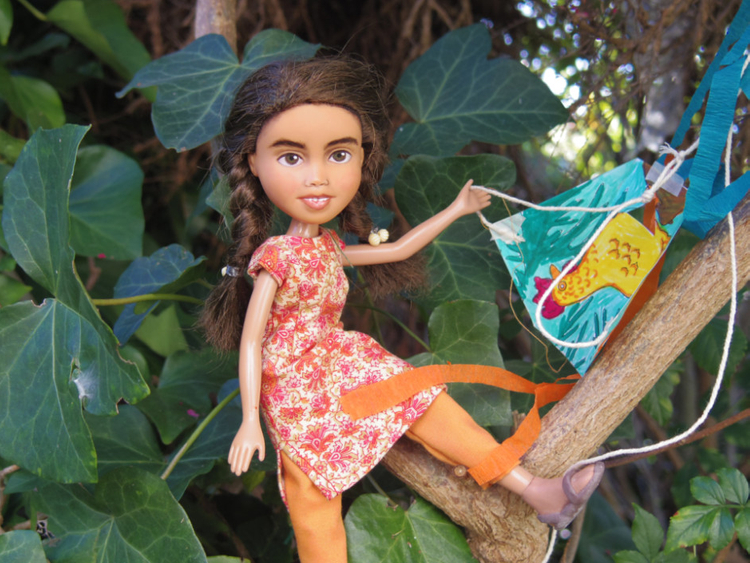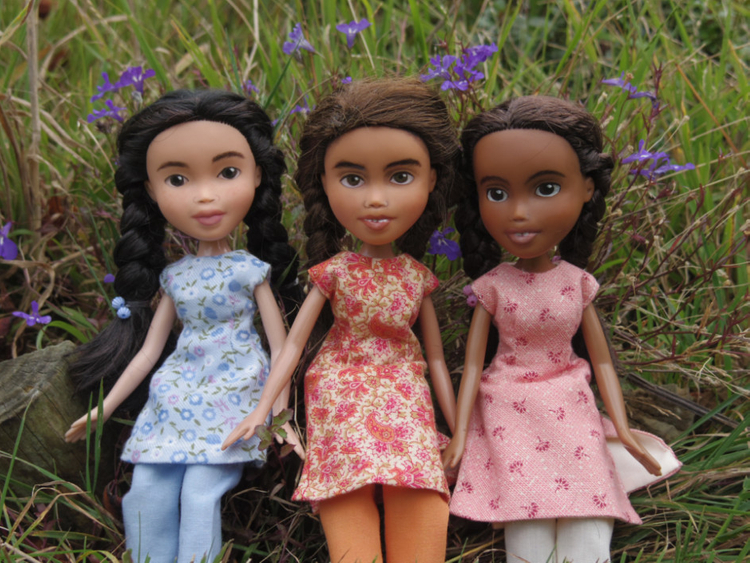
Call it a blessing in disguise, but losing her job as a science communicator last year has changed Tasmania-based Sonia Singh’s mission in life completely. It gave her some time, while applying for other jobs, to work on a creative project she had dreamed up. Now she is successfully running a venture called Tree Change Dolls and has also embarked on a social mission.
Born and brought up in the beautiful and natural environs of Tasmania, the southernmost island state of Australia, Sonia, along with her four sisters, loved playing with dolls as a child.
“We loved taking our toys, including our collection of mostly second-hand dolls, outside to play in the garden, the bush and at the beach. Our mother taught us to knit, sew and paint. Even as small children we would make our own toys as well as design clothes for our dolls,” she said.
“It is important for children to spend time outdoors amid nature, which helps brings out their innate creativity.”
But then as happens with all children, Sonia’s growing-up days were more about focusing on studies and dolls were given the short shrift. “It was in September 2014, following a series of Australian government funding cuts to science research organisations that I lost my job with the Commonwealth Scientific and Industrial Research Organisation [CSIRO] Education. So, besides looking for work, I took the opportunity to start an innovative task.”
Sonia loves visiting markets that sell seconds; Op shops and Tip shops, where she likes to look for different toys for her young daughter. “I believe that children do not need new toys all the time. There is a lot of value in reusing and exchanging older toys and being a bit creative with them.”
On such visits, Sonia often noticed a lot of discarded fashion dolls in the shops, and decided to see if she could give them a new lease of life by restyling them to look more like real children — something similar to dolls she would have loved to play with as a child.
“The first time I repainted the doll’s face and gave her new clothing and new shoes, I was very surprised to see the change I could make. I kept my ‘doll project’ secret at first, as I was embarrassed to be spending time on dolls as a 34-year-old rather than applying for jobs. But when I showed them to my friends and family, they were amazed.”
Putting her creativity to good use, Sonia began reconditioning the dolls by restyling their faces. “I removed the factory paint and repainted their faces, giving them a more natural look and down-to-earth style. I even made clothes for the first group of dolls that I had acquired, but later my mother offered to make clothes for them. And we put them up in the garden,” she says.
“My husband John loved the set-up and suggested I post photographs of the dolls online. With encouragement from him, I created my Tree Change Dolls Tumblr blog and shared photos of the dolls with my Facebook friends.”
She was surprised at the attention her dolls attracted. “I found my work going viral within days. While journalists from all over the world wanted to do news stories on the dolls, thousands of messages poured in from people wanting to buy my dolls. It was amazing to find that my pretty simple dolls had triggered a global conversation about the suitability and style of some children’s toys.”
Overwhelmed by the response, without delay, Sonia set up the website www.treechangedolls.com.au. Explaining the idea behind the name, she said: “The term ‘tree change’ in Australia means moving from the city to the countryside for a relaxed environment. John and I discussed several names, but somehow both of us liked this one. And it worked.”
“Through my online shop, I began selling my dolls. Now, every few weeks, I post a group of dolls for sale. To date, the prices have ranged from A$75 (Dh203) to A$260 for each doll depending on the amount of work that has gone into them. Each time I post the dolls online, they sell within seconds. It is basically a lottery to buy one of my dolls. But I am just one artist and can recycle only a limited number of dolls.”
For this reason, the enterprising girl shares tips and provides instructional videos on “how she restyles her dolls”. The thought process that goes into each doll that she restructures is to turn it from a discarded plastic waste to a unique toy. “I want children to have the same feeling that we had, especially when we played with dolls outdoors.”
“My mother and I also sell her knitting patterns for the doll’s clothes online. I receive e-mails and messages daily from families and children who are interested in recreating their own special dolls. We encourage families and children to enjoy the creative fun of restyling their old dolls at home and provide resources to help them do this. My mother too enjoys being part of this incredible experience. She is an expert in sewing and knitting and all the dolls’ clothes are handmade by her.”
If the dolls are missing some parts, Sonia repairs them making new ones. She also fixes their hair by brushing, trimming and styling them.
In a way, she has started a movement. “Every month, I list one charity doll on eBay. All proceeds go towards a social cause. Each doll on average has raised over A$1,000 for the charity. In March, to mark the International Women’s Day, I donated the money raised from the sale to the International Women’s Development Agency. The organisation is immensely supportive to women throughout the Asia-Pacific region.
“In April, the donation went to Tasmania Land Conservancy for protecting the land that is important for biodiversity and protecting endangered species. Interestingly, this charity was chosen by local school children when I visited them to give a demonstration of some of my dolls.
“The proceeds for May went to Indian Nobel laureate Kailash Satyarthi’s NGO Global March Against Child Labour, and the amount for June was given to Save the Children, one of Australia’s largest aid and development agencies dedicated to helping children.”
Her charity doll for July is up for auction in support of the Indigenous Literacy Foundation, which was started with the aim of drawing upon skills and expertise of the Australian book industry to address literacy levels in remote indigenous communities.
Sonia gets numerous requests to accept dolls as donations. “I refuse such offers, as I have more than enough dolls already in hand.”
Due to the extraordinary demand for her dolls, she is considering expansion of the Tree Change Dolls brand to make her style of dolls available to children across the world in a sustainable and environment-friendly way. “Plastic toys will be around for hundreds of years. It is better that they are played with rather than dumped in some landfill.”
Nilima Pathak is a journalist based in New Delhi.














